Twitch’s loss of top streamers impacts hours watched and streamed in Q4 2019, report says
The loss of several big-name streamers is finally taking its toll on Twitch, according to a new report from StreamLabs and Newzoo out today. In August 2019, top streamer Tyler "Ninja" Blevins, announced his intention to leave Twitch for Microsoft Mixer. Several others have since defected as well, including competitive gamer Michael "Shroud" Grzesiek, who went to Mixer in October, Jack "CouRage" Dunlop, who left in November for YouTube Live, and Jeremy "Disguised Toast" Wang, who also left in November, but went to Facebook Gaming.
The loss of Ninja hadn't impacted the amount of time Twitch users spent watching content on the platform as of Q3 2019, but the total hours streamed had slightly dipped. As of Q4 2019, however, Twitch's momentum began to slow.
While the Amazon-owned streaming site is still by far the leader in terms of hours of content both watched and streamed compared with rivals, with a market share of 75.1%, the number of hours watched on Twitch declined from Q3 to Q4 2019 by 9.8%.
This resulted in the lowest number of hours watched on the platform (2,299.6 million) since Q3 2018 (2,283.9 million).
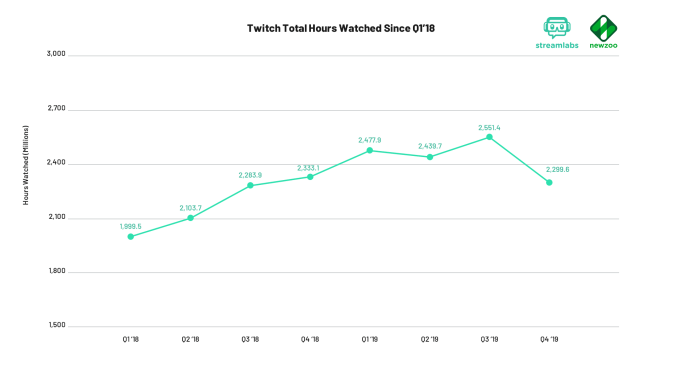
That being said, Twitch overall is still growing, with a 12% increase in total hours watched on the platform in 2019 compared with 2018.
The high-profile losses are also now impacting the hours streamed on Twitch, the report found.
The platform in Q4 2019 saw the lowest number of hours streamed (82.7 million) since Q2 2018 (86 million). Again, the trend on a year-over-year basis is still climbing upwards, with a 16.1% increase in total hours streamed in 2019 versus 2018.
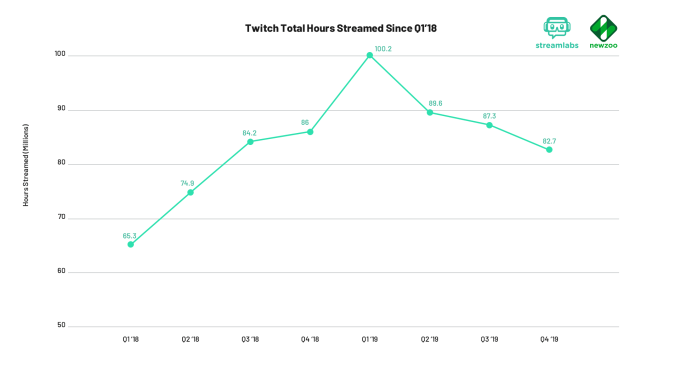
Twitch saw declines in the number of unique channels streaming over the course of 2019, too, dropping from 5.6 million in Q1 2019 - the highest ever - to 3.7 million by Q4.
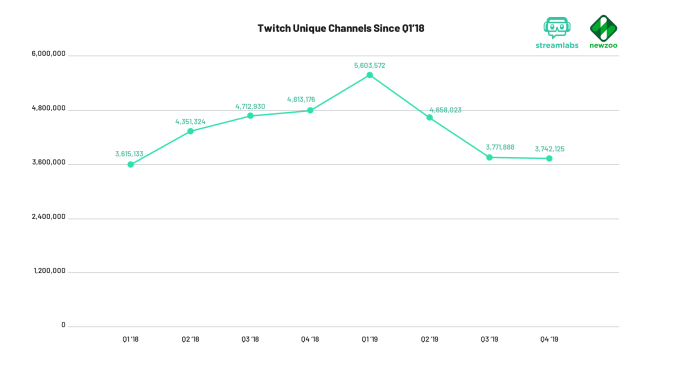
Concurrent viewers declined on a quarterly basis by 9.4%. This is the lowest average concurrent viewership figure since Q3 2018. On an annual basis, however, concurrent viewership was still up by 12.3%. The average number of viewers per channel was stable and has increased by 12.5% since Q1 2018.

YouTube Gaming Live, meanwhile, became the only platform to see increases in hours watched, streamed and concurrent viewership in Q4 2019.
CourageJD's move to YouTube Gaming Live has helped to boost Google's platform, but the increases can also be attributed to YouTube's broadcast of top esports events and influencer moments.
The total number of hours watched on YouTube Gaming Live grew 46% from Q1 to Q4 2019 to reach 909.1 million - making that the largest percentage increase among gaming sites. Hours streamed remained stable, closing the year at 12.3 million. Unique channels increased 4.8% on a quarterly basis, but declined 24.6% from Q1 2019.
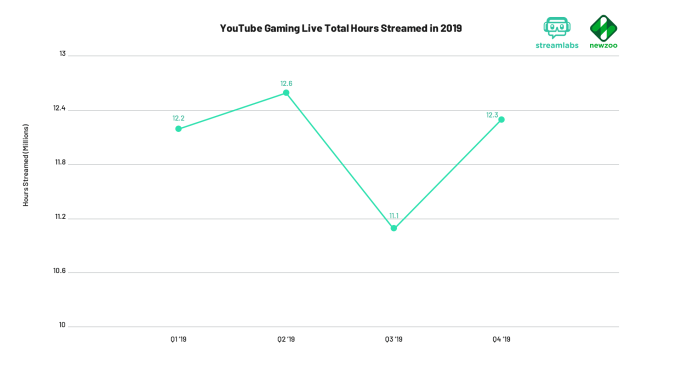
YouTube Gaming Live's biggest jump was in concurrent viewers, which grew by a sizable 33.8% in Q4 - making it the only platform to see an increase in average concurrent viewership in the quarter. Average viewers per channel also increased by 21% quarter-over-quarter - even though the number of unique streaming channels grew by 4.8%, which usually means a drop in average viewers per channel would occur.

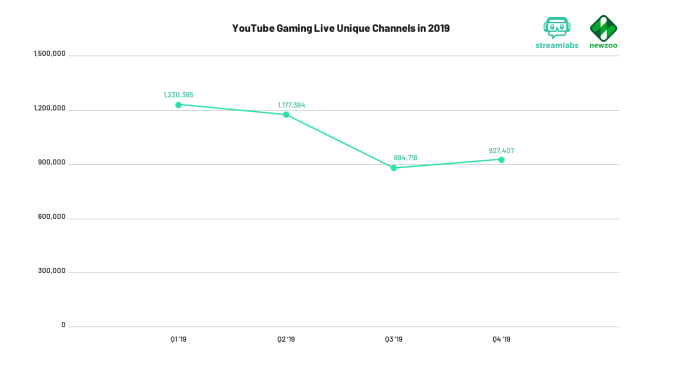
YouTube Gaming Live closed the year with 22.1% market share.
Ninja's move to Mixer has encouraged other streamers to start broadcasting on the platform, but despite that deal and the one with Shroud, the number of hours watched declined 8.5% quarter-over-quarter, from 90.2 million in Q3 2019 to 82.5 million in Q4 2019. But year-over-year, Mixer's hours watched have more than doubled.
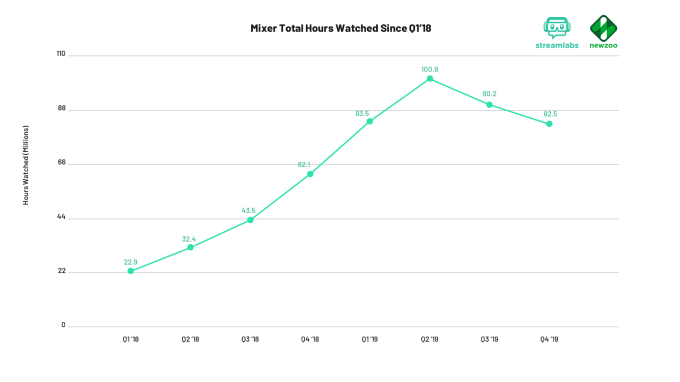
Ninja and Shroud have helped boost the number of hours streamed on Mixer, more than doubling the number of hours in Q3. But in Q4, the number of hours streamed dropped 12.9%, from 32.6 million to 28.4 million.
However, 80.3 million hours of content was streamed in 2019 versus just 35.2 million hours in 2018.
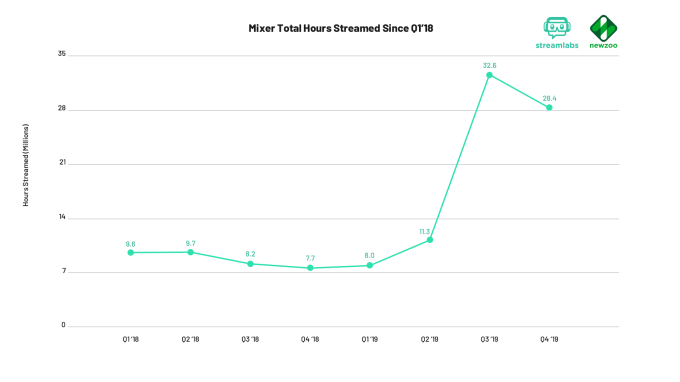
There also was a 7.5% decrease in the number of Mixer channels in Q4 (3.9 million to 3.6 million), but a 78% increased in 2019 compared with 2018. Mixer now has triple the number of unique channels streaming, compared with YouTube Gaming Live.
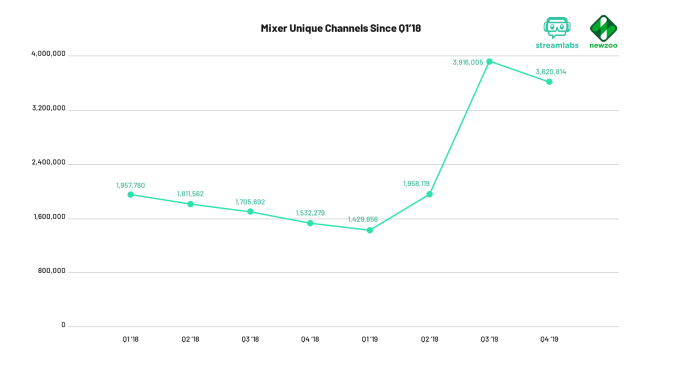
Average concurrent viewership on Mixer declined 8% from Q3 to Q4, but was up 55.1% year-over-year. Average viewers per channel remained stable.
Mixer closed the year with a 2.7% market share.
The report doesn't include Facebook Gaming live streaming data. But it does note there was a 400% increase in the number of live streams in 2019, from 504,173 live streams in Q1 to 2,525,863 in Q4, based on Facebook Gaming streamers who used the Streamlabs' OBS product. Additionally, the number of total hours streamed increased by 275%, from 438,835 in Q1 to 1,648,557 in Q4.
Also in Q4, several live streamers made the switch to Facebook, including Disguised Toast, as noted above, as well as Zero and Corinna Kopf. This also could have contributed to the momentum in the quarter, as well as launches of charity live streaming tools, and the arrival of the Facebook Gaming app in Thailand and Latin America.
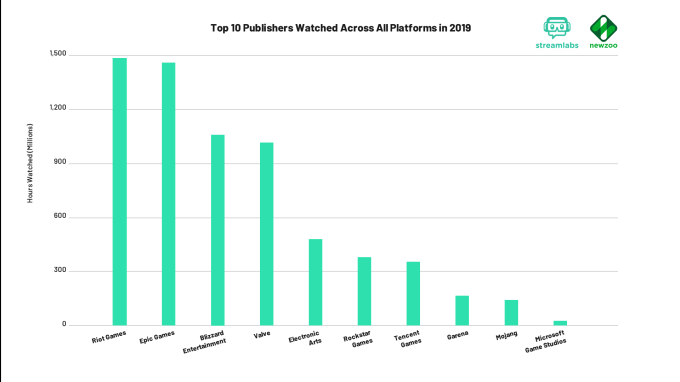
For the year, the most-watched publisher was Riot Games, due to League of Legends and Teamfight Tactics. Epic Games (Fortnite) trailed by only 25.1 million hours. The latter saw a 29% decline, year-over-year, in terms of hours watched, while the former grew just 3.6%.
Similarly, League of Legends was the No. 1 game streamed on Twitch in 2019, followed by Fornite then Grand Theft Auto V. Fornite topped YouTube Gaming Live and Mixer.
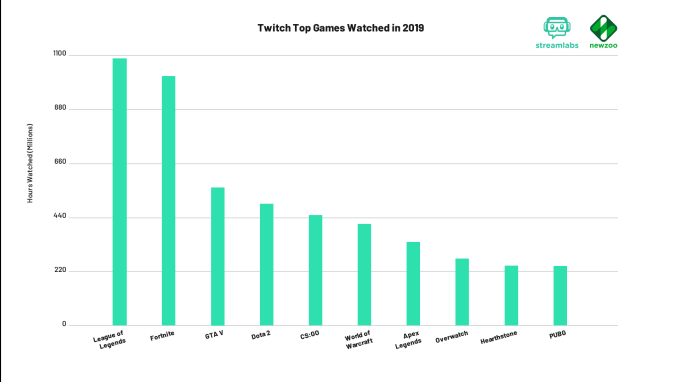
While none of the streamers' defections from Twitch have been significant enough to force the platform from its No. 1 position, it has created a healthier competitive landscape among streaming services. But in reality, it's still too soon to see what long-term impacts the moves will have on Twitch and whether or not its rivals can continue their momentum in 2020.